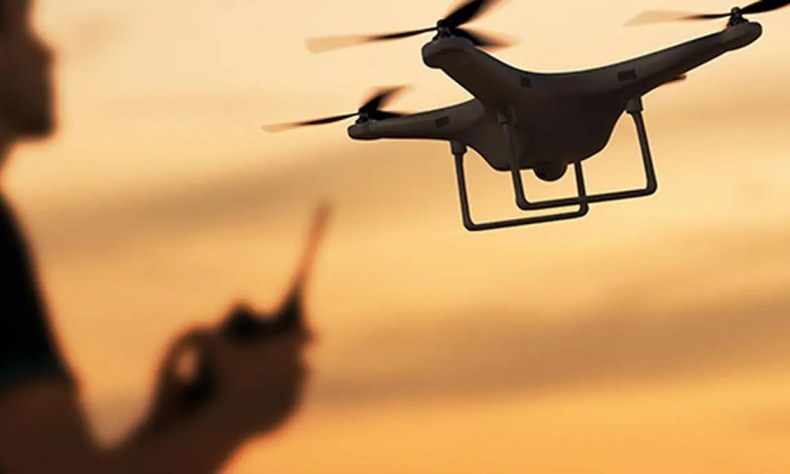
Once limited to back-end analysis, AI is now driving a strategic shift from reactive operations to predictive, data-driven decision-making across the military spectrum. By integrating intelligence from satellite imagery, signal intercepts, and field reports, AI enables commanders to act faster, with greater precision and insight, industry players noted.
AI is no longer new to global defence strategies, with Ukraine deploying autonomous and AI-guided drones—both aerial and aquatic—against conventional Russian forces. Algorithm-driven first-person-view (FPV) attack drones have reportedly destroyed more Russian armour than ever before, noted Jaspreet Bindra, Co-founder of AI&Beyond.
“In Gaza, the Israelis use advanced algorithms, codenamed The Gospel and Lavender, to sift intelligence and suggest targets in real time. In 2020, a Turkish-made Kargu-2 attack drone may have autonomously hunted down fighters in Libya without human orders – possibly the first lethal strike by a truly autonomous weapon, also becoming AI first. The US, China, and Russia are investing heavily in AI-enabled command and control systems.”
He added that India, too, is integrating AI in areas like border monitoring, unmanned vehicles, and predictive maintenance of military assets. In October last year, the Ministry of Defence also launched an AI roadmap and defence AI projects under iDEX.
Sambit P, the co-founder and CTO of IG Drones, pointed out a notable use case for AI with drone swarms. IG Drones supplies advanced indigenous drone systems to the Indian Army. These drones, including VTOL (vertical take-off and landing) and FPV (first-person view) types, help strengthen India’s defence capabilities, especially in tough terrains like mountains and border areas.
Unlike a single drone, a swarm can share information within the group, adapt to changing conditions, and work toward a common goal, similar to how bees communicate. This smart coordination allows the drones to be more effective in surveillance, training, and real-time operations.
“AI plays a key role in strategic military decision-making. By analysing huge volumes of data quickly, AI can find patterns human analysts might miss or take longer to spot. It can simulate different outcomes based on changing scenarios, helping commanders prepare for multiple possibilities. GenAI models can even present findings in an easy-to-understand format, helping humans make better decisions faster,” he said.
Tarun Wig, the Co-founder & CEO of information security consulting company Innefu Labs, stated the company has worked closely with defence and intelligence agencies, seeing first-hand how AI is adopted to augment human capabilities across multiple domains.
AI-driven agentic workflows enable secure, offline capabilities such as profile generation, report summarisation, and document translation. On the ground, AI enhances border surveillance by analysing drone feeds to detect suspicious activity and track infiltrations in real time. By studying past incidents, behaviour patterns, and intercepted communications, it can predict threats, uncover sleeper cells, and pre-empt terrorist activity.
For mission planning, AI models optimise force deployment by factoring in terrain, threat levels, weather, and historical data. In cyberspace, AI/ML systems detect anomalies, phishing attempts, and zero-day exploits, safeguarding critical defence networks.
Atul Raj, the co-founder and CEO of deeptech AI company Staqu Technologies, a player in the audio-video analytics space, shared another key use case — detecting military build-up using satellite imagery.
“Modern AI systems have advanced beyond traditional image recognition, now capable of analysing wide-area satellite data to identify and classify even low-resolution objects, like distinguishing military tanks from civilian trucks or spotting mobile missile launchers that may otherwise appear as a few blurred pixels. This level of precision is crucial in assessing strategic threats in real time,” he said.
While Unmanned Aerial Vehicles (UAVs) play a critical role in monitoring vast and often inhospitable terrains, the volume and complexity of continuous video feeds make manual analysis unfeasible. Here, AI models trained specifically on spatiotemporal data—understanding spatial layout and temporal motion—are deployed to detect real-time border intrusions or suspicious movements, monitor infrastructure changes, and identify camouflaged or concealed enemy installations.
A complex technical challenge is the “moving camera – moving object” problem, where both the UAV and target may be in motion. Defence-grade AI systems address this using egomotion compensation to isolate real object movement from drone movement, spatiotemporal modelling to track object behaviour consistently across video frames, and motion segmentation techniques to filter out background noise and focus on relevant activity.
“AI systems used by defence agencies are deployed in secure, air-gapped environments — entirely disconnected from the internet. This ensures sensitive data is never exposed to external networks. Additionally, models are often trained on-premises using the agency’s data. There is no dependency on external cloud services or third-party infrastructure, reinforcing data sovereignty and operational security. This isolated and controlled approach ensures that while AI capabilities are maximised, national security and data integrity are never compromised,” the Innefu Labs CEO noted.
Challenges
However, AI is not without its challenges, he continued. A major shortcoming is the ‘black box’ nature of some models, which can make transparency and explainability difficult, especially in sectors where accountability is non-negotiable.
AI models can inherit bias from imbalanced or unrepresentative training data, leading to skewed or unfair outcomes. In many advanced systems, the decision-making process lacks transparency, making it difficult for users to interpret or trust the results, particularly in high-stakes domains like defence and healthcare, where accountability is critical.
Deploying AI also demands substantial investment in technology and skilled talent, posing challenges for smaller organisations. Additionally, data privacy and security remain key concerns, given the sensitive nature of the information these systems often process.
“Globally, militaries are exploring air-gapped systems and synthetic data to prevent leaks. In India, defence institutions are increasingly aware of the need for indigenous AI capabilities, reducing reliance on foreign datasets and cloud services. Projects under iDEX and collaborations with DRDO emphasise secure infrastructure and IP ownership,” Bindra shared.
More Like This

Published on May 18, 2025
This article first appeared on The Hindu Business Line
📰 Crime Today News is proudly sponsored by DRYFRUIT & CO – A Brand by eFabby Global LLC
Design & Developed by Yes Mom Hosting






